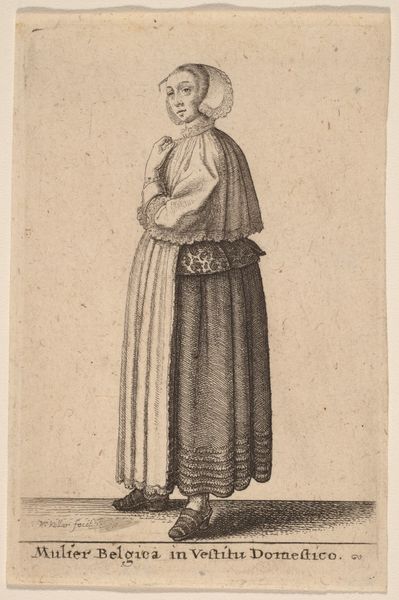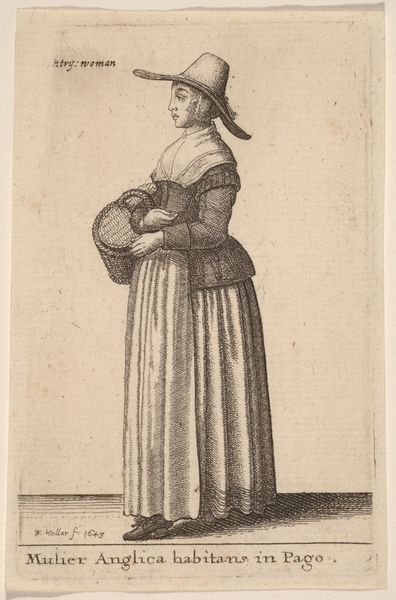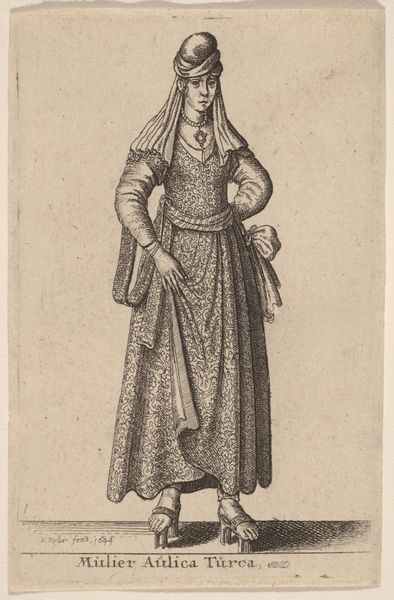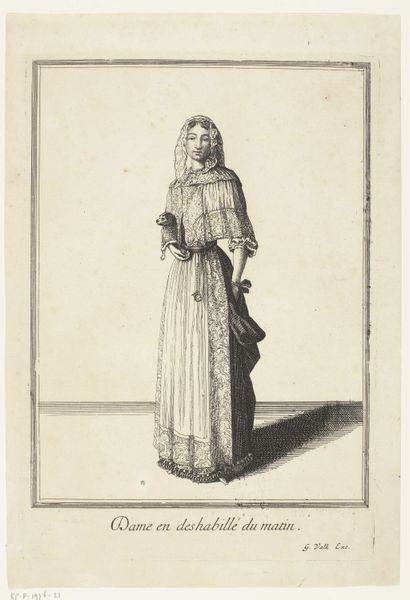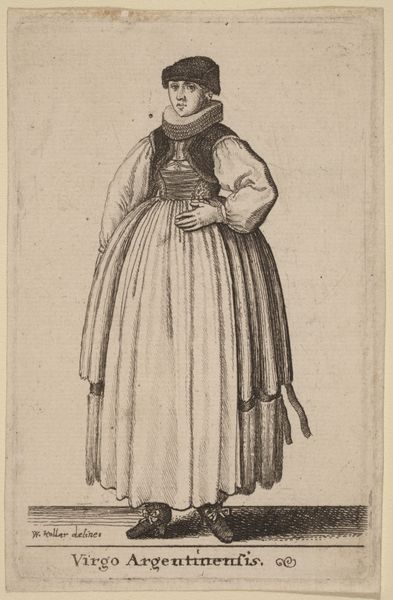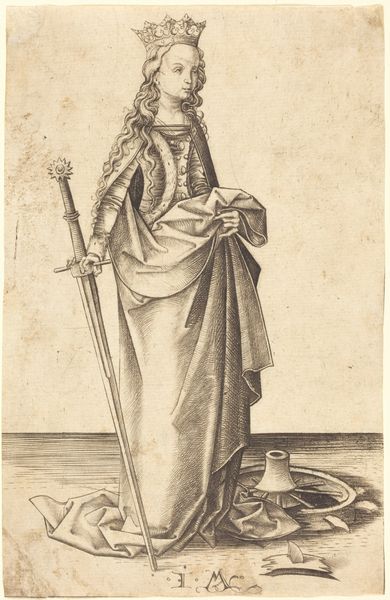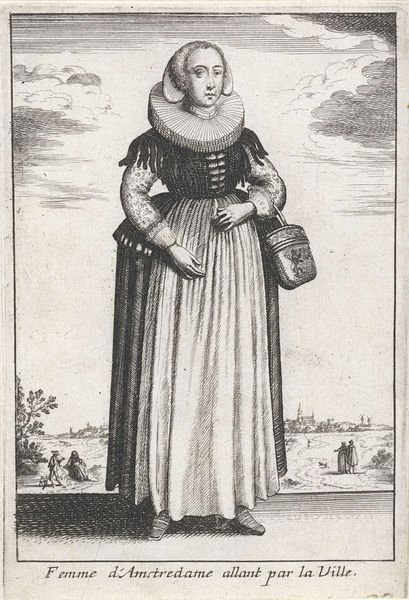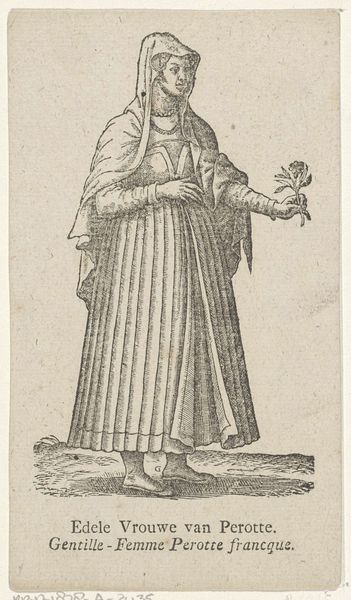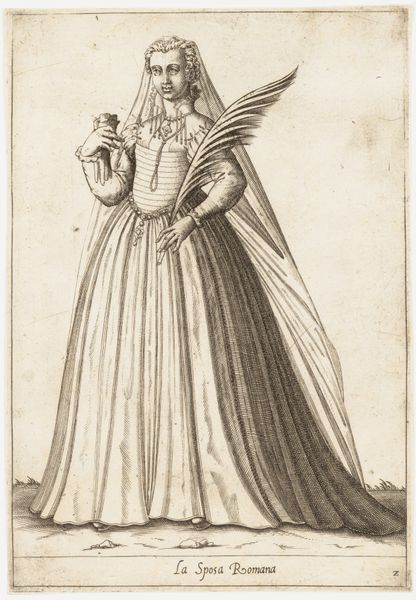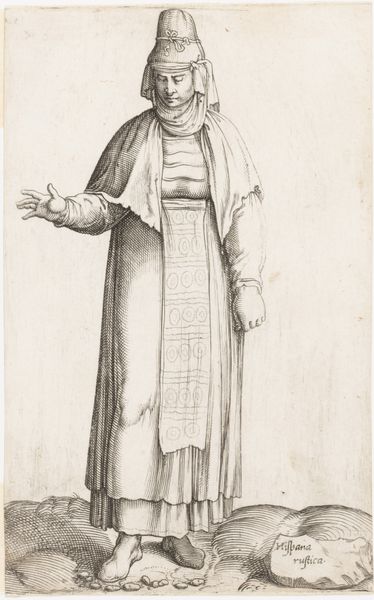
Girl from the Island of Paros, from 'Les quatre premiers livres des navigations et pérégrinations orientales' by Nicolas de Nicolay 1568
0:00
0:00
drawing, print, engraving
#
portrait
#
drawing
# print
#
figuration
#
11_renaissance
#
northern-renaissance
#
engraving
Dimensions: Sheet (trimmed): 9 1/16 × 6 1/4 in. (23 × 15.8 cm)
Copyright: Public Domain
Editor: So, this is "Girl from the Island of Paros," a 1568 print by Nicolas de Nicolay. The detail is really striking for an engraving. What do you see in her posture and clothing? Curator: The figure's clothing immediately places her within a specific cultural context, right? But, her open palm, that very deliberate gesture—it speaks of offering, or perhaps even vulnerability. Does the slight tilt of her head also imply meekness or perhaps an expectation of interaction with the viewer? Editor: It could. I didn’t read her body language that way at first, but it makes sense. What do her garments communicate? Curator: Notice the layering of fabrics, the ornamentation – especially around the neckline and sleeves. These elements suggest a careful balance between displaying local traditions and adherence to some unspoken rules about status, virtue and piety within the depicted community of Paros. It represents layers of personal expression carefully framed by culture. Even that cross pendant – how does it influence our reading of the image? Is it an act of genuine faith, or of performed righteousness? Editor: That’s interesting... a “performed righteousness.” I guess I hadn't thought about that aspect. Do you think it's important that this image was created for a book about "oriental peregrinations"? Curator: Precisely! How does that intention alter the reading? Perhaps it emphasizes the exotic, framing this Paros woman for a European audience hungry for imagery of the unfamiliar 'other'. But is it ethnographic or condescending? And what cultural biases are inherently infused within that gaze? Editor: I never would have considered those cultural layers on my own. I thought the portrait was more straightforward. Curator: Isn't that the magic of cultural memory encoded in visual forms? It shows how even seemingly simple images reveal unspoken cultural codes and long standing patterns.
Comments
No comments
Be the first to comment and join the conversation on the ultimate creative platform.
